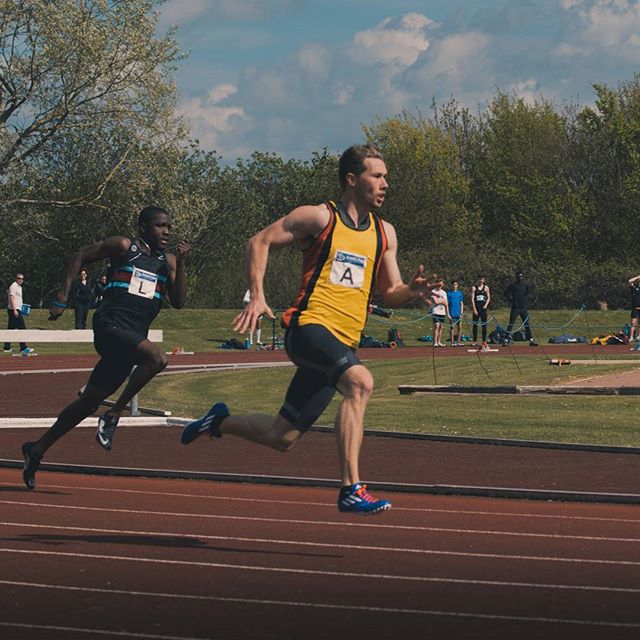Other Posts
What To Wear For Running: Dedication, Focus & Feeling Comfortable
October 5, 2021In this article, we'll show…


If you average the time out across all the age groups, a good time to run a mile is 7 minutes & 4 seconds.
Running a mile is more than just a test of speed; it’s a benchmark of progress, a measure of fitness, and a universal yardstick for runners around the globe.
But what exactly constitutes a “good” time? The average time to run a mile is a fascinating metric that offers insights into how you stack up against others in your age and sex category.
Whether you’re a seasoned marathoner or lacing up your running shoes for the first time, understanding this average can be a game-changer in your running journey.
In this comprehensive guide, we’ll delve into average mile times, explore the factors that affect them, share tips to shave seconds (or even minutes) off your time, and even take a nostalgic jog through the history of the mile run. Ready to hit the track? Let’s get started!

Table of Contents
The mile run, a classic test of endurance and speed, has long been a standard measure for runners. But what’s considered a “good” mile time? The answer, intriguingly, varies across age groups and between sexes. Let’s break it down.
| Age | Male | Female |
|---|---|---|
| 10-12 | 08:15 | 09:30 |
| 13-15 | 07:30 | 08:30 |
| 16-19 | 06:45 | 07:45 |
| 20-29 | 06:15 | 07:15 |
| 30-39 | 06:45 | 07:45 |
| 40-49 | 07:15 | 08:15 |
| 50-59 | 07:45 | 08:45 |
| 60-69 | 08:15 | 09:15 |
| 70+ | 08:45 | 09:45 |
These averages are not just numbers on a page; they tell a story. Younger runners tend to have faster times, reflecting the natural vigour of youth. As age increases, times generally slow down, reflecting changes in muscle mass, metabolism, and other physiological factors.
For men, the times are consistently faster across all age groups, reflecting differences in muscle composition and aerobic capacity. However, it’s essential to recognize that these are general trends, and individual performance can vary widely.
These averages can serve as a benchmark, helping runners set realistic goals and track progress. They can inspire improvement or provide reassurance that you’re right on track.
Running a mile is a complex dance between body and mind, influenced by a symphony of factors that can either propel you forward or hold you back. Let’s explore these factors and understand how they shape the time it takes to run a mile.
As the saying goes, “Age is just a number,” but when it comes to running, it’s a number that matters. Younger runners often enjoy faster mile times due to higher metabolism rates, more muscle mass, and greater flexibility. As we age, these factors may decline, leading to slower times. But fear not! With proper training and care, age can be but a gentle slope on your running journey.
Biological differences between males and females, such as muscle mass and aerobic capacity, can lead to variations in mile times. While men tend to have faster average times, individual performance varies widely, and many female runners outpace their male counterparts. Embrace your unique physiology and tailor your training to your strengths.
Your training level is like the fuel in your running engine. More experienced runners often have faster mile times due to better technique, stamina, and muscle development. Whether you’re a newbie or a seasoned pro, a well-structured training plan can elevate your performance. Consider incorporating interval training, endurance runs, and strength training to optimize your mile time.
Some people are born to run! Genetics can play a role in your natural ability to excel in running. Factors like muscle fibre composition and lung capacity might give some runners a head start. However, genetics isn’t destiny. You can overcome genetic limitations and reach your running goals with determination and the right training.
Ever tried running against a howling wind or on a scorching summer day? Weather conditions can significantly impact your mile time. Temperature, humidity, wind, and even altitude can either aid or hinder your run. Understanding how weather affects your performance can help you plan your runs and set realistic expectations.
Running a mile is a journey; like any journey, it’s filled with opportunities for growth and improvement. Whether you’re aiming to shave a few seconds off your personal best or simply want to feel more comfortable on your daily jog, this section is your toolkit for success. Let’s dive into the methods, tips, and personalized advice that can help you reach your mile-running goals.
Improving your mile time isn’t about a single magic trick; it’s a combination of strategies, dedication, and understanding your body. From regular training to specialized techniques, there’s a path for every runner.
The mile run has been a classic distance in track and field, capturing imaginations for centuries. Its origins can be traced back to ancient civilizations, but it truly came into prominence in the modern era, becoming a benchmark for runners and a thrilling spectacle for fans.
We’ve sprinted through the multifaceted world of running a mile, exploring everything from average times and influencing factors to training tips and historical milestones. Whether you’re a seasoned runner or just starting, the insights gleaned from this guide can be your compass, leading you to personal triumphs and a deeper connection with the sport.
Embrace the wisdom of the ages, the science of training, and the joy of personal growth. Let the stories of legends inspire you, and the practical tips guide you. Your mile is waiting, and it’s uniquely yours.
So, dear reader, lace up those shoes and take the first step.